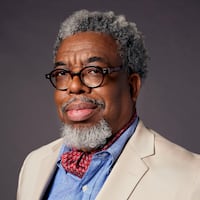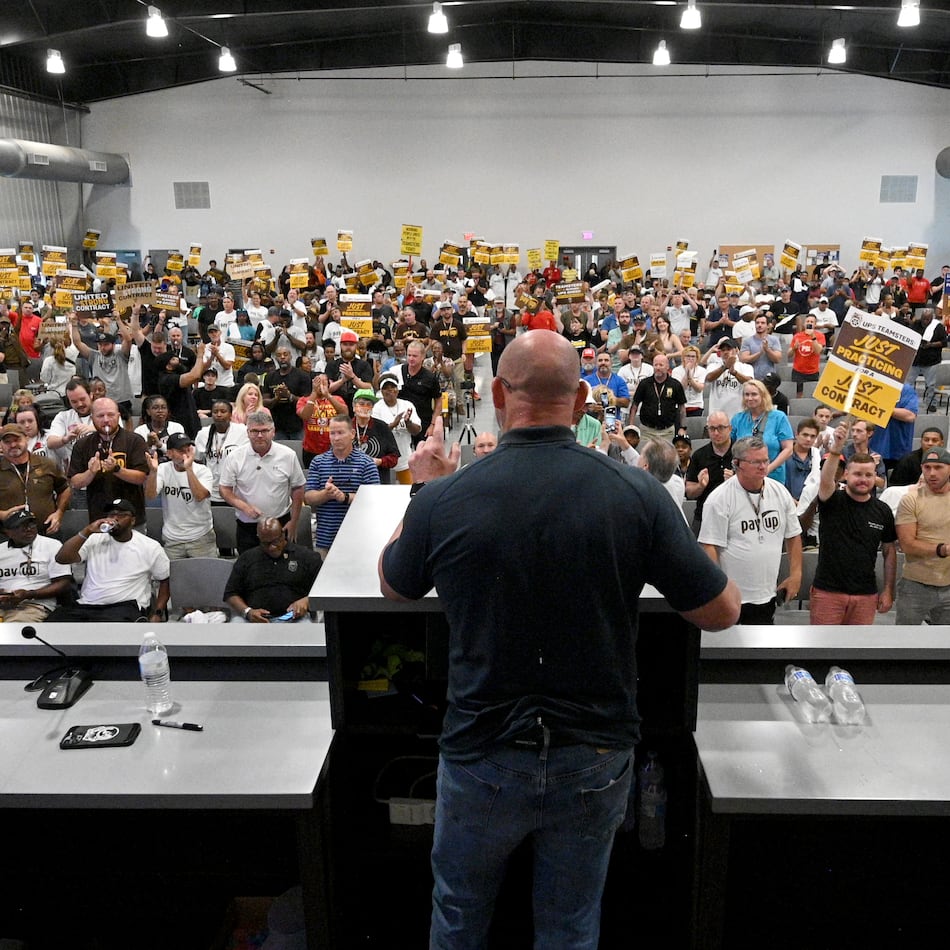Last Wednesday, a day after seeing U2 perform at the Georgia Dome, Carly Horine and Peter Hainje strolled through Centennial Olympic Park.
The couple, who were flying home to Indianapolis that night, had walked from Underground Atlanta to the park — through what seemed like an urban minefield of homeless people and beggars. A man hanging from a lamppost screamed at them as they walked by.
“I was wondering where the mission was, because I saw so many panhandlers. Some of it alarmed me and some of it was very intimidating,” Horine said. “If Peter wasn’t here with me, I would have already left. I wouldn’t be out here.”
These are the people Atlanta wants in its downtown: tourists who take in a show, go to a game, see the aquarium. They spend money at hotels and restaurants, and they leave happy. But downtown Atlanta seems to be missing one key ingredient: the feeling that you’re safe on the streets.
Urban planners and local boosters call panhandling and homelessness “the quality of life issue.” And it won’t go away.
---
Dealing with the homeless and beggars downtown has been a key issue during Shirley Franklin’s eight years as mayor. That’s mainly because everyone confronts it, including city residents, businesses, college students, politicians, policy-makers, suburbanites and tourists.
“I always sigh when I talk about it, because it is such a long conversation,” said Debi Starnes, Franklin’s homeless policy adviser. “It is a very daunting issue, especially in this economy.”
For the past four years, Atlanta has been fighting what it calls “aggressive panhandling.” In 2005 Franklin signed an ordinance that made it illegal to panhandle in parts of downtown.
The law made it illegal to audibly beg for money in the “tourist triangle” that contains the Georgia Aquarium, Centennial Olympic Park and several major hotels. The Martin Luther King Jr. National Historic Site is not in the triangle but is covered by the law as if it were. The measure also outlaws begging anywhere in Atlanta after dark.
On the third violation a panhandler may be jailed for up to 30 days, fined up to $1,000 and ordered to perform community service.
The ordinance was viewed by critics as an attempt by the business community and Franklin to rid the city of its underclass. Supporters said panhandling was hurting the city by driving away tourists, while making life miserable downtown.
“Aggressive panhandlers see the banners and they know when conventions are coming to town,” said William Pate, president and CEO of the Atlanta Convention and Visitors Bureau. “They come to panhandle visitors to the city. That is where they are successful. That is why you don’t hear about panhandlers in Snellville.”
---
Wilma Sothern, vice president of marketing for Central Atlanta Progress, which promotes the city’s economic vitality by marketing downtown, said the ordinance had problems. “Everything fell on APD for enforcement and that wasn’t working.”
So in September 2008, after a police crackdown on aggressive panhandlers and a subsequent survey of tourists who continued to complain about the problem, the city took it a step further with a public education campaign called “Stop Panhandling. Give Change That Makes Sense.”
Part of the plan was to install 24 “Giving Meters,” into which donors could drop change for the needy instead of giving to panhandlers. The bright yellow meters feature signs reading, “Don’t give to panhandlers.”
Sothern said the 16 meters in place now collect a total of about $5 a day, which is collected by the city and distributed to agencies. Eight more meters will be installed within the next two months.
But in a Central Atlanta Progress poll released in March, 30 percent of the people surveyed said they still give money to panhandlers.
The survey, conducted by the Schapiro Group, interviewed 297 people in downtown, Buckhead and Midtown. Of those surveyed, 46 percent said panhandling was a major problem, with the highest percentage of respondents in downtown.
Walking through downtown gives the impression that no matter what steps are being taken, the problem is not going away.
“There was [once] a whole lot of talk about the panhandling ordinance, but no one is talking about it anymore,” said Cliff Potts, a salesman at Brite Creations, a clothing store downtown. “So anybody coming around with a convention badge ... the panhandlers are giving him fits. If a minister leaves our store with a new suit, they are all on him. That makes people not want to come here anymore.”
The Atlanta Police Department ignored numerous requests from the Journal-Constitution for statistics on panhandling arrests downtown.
According to Central Atlanta Progress, at a town hall meeting in July the APD reported that it had made 505 panhandling-related arrests since August 2008.
Police also conducted 250 formal “interventions” over that period. At the same time, the city’s Ambassador Force conducted 1,925 interventions, in which panhandlers were ordered to move on or directed to the Gateway 24/7 Homeless Services Center.
In hearing the arrest numbers, Potts and others wondered where the impact is.
J. Leonard, who with her husband has operated J&G Fish and Grits on Forsyth Street for two years, said men used to come into the restaurant to sleep, beg and harass customers.
“The first year was kind of rough,” said Leonard, sitting at one of her tables. Outside, apparently homeless men walked past her windows more frequently than businessmen. “It makes it rough when you are trying to run a business.”
With a new mayor set to be elected in less than a month, residents and business owners are calling for the city to better enforce the current law or develop more effective ways to deal with the problem.
“We need to acknowledge that we have a problem. If we want downtown to be a destination we need to make it better,” said Joann Cotton, who works across the street from Woodruff Park in a clothing store. “Right now we are losing business, the politicians are not thinking out of the box. Everybody wants to do the status quo.”
Tuesday, the four major candidates for mayor are scheduled to debate homelessness at a forum sponsored by the Homeless Action Group.
---
Thousands of homeless — or people on the verge of homelessness — live in Atlanta.
“There are more and more people out of work and living on the edge, but the quality of life has improved and is improving,” said Central Atlanta Progress President A.J. Robinson. “But it is an ongoing challenge. In these days when you have limited resources, it becomes more challenging.”
There were 6,840 homeless people in Atlanta in 2007, according to the U.S. Department of Housing and Urban Development. Atlanta has more homeless people than Boston and Miami, and more than Charlotte, Kansas City and St. Louis combined.
Protip Biswas, executive director of the United Way’s Regional Commission on Homelessness, believes the homeless number is higher because of the recession.
“We find many people coming to Atlanta because they think they can get jobs,” Biswas said. “Then it doesn’t prove to be the Promised Land.”
If anyone has a window to the problem, it is Cotton, whose shop, TriBeCa, is in the same space that once housed a luxurious barbershop owned by Alonzo Herndon, Atlanta’s first black millionaire.
In fact, she has two windows. She can look into Woodruff Park from her front window, while Broad Street is in full view from the back window.
“Most mornings at 9:15, 9:30 there is always somebody in front of my door. They see you coming and as a woman — walking here in the morning or after 7 at night — it can be uncomfortable,” Cotton said. “And it has a negative impact in the businesses.”
And if there is a symbol of the overall quality of life problem in Atlanta, it might be Woodruff Park. In the heart of the downtown business district, it is one of the most active and visible places in the city for homeless people and panhandlers to gather.
On one of the last days of summer, Frazier Bolton, the supervisor of the park’s attendants, was supervising a man cleaning urine off the wall of the outdoor bathroom. The homeless man who had been playing chess got up and instead of using the bathroom, urinated outside it — in broad daylight.
“I made him clean it up,” Bolton said. “It was either that or go to jail.”
Cooper Holland, of the Downtown Improvement District and the project manager for the park, said efforts are under way to raise more than $3.5 million in private and foundation money for improvements.
She said the goal is to get more people into the park with more programming and activities.
“We call it ‘solution by dilution,’ ” Holland said. “If we bring in more people it balances out.”
Holland, who moved downtown in 1996, is in the park so much that park regulars think she is “Mrs. Woodruff.”
“I feel safe, but I understand how some people might not. Downtown is a drop-off point for a lot of problems,” said Holland, surveying the park. Someone catches her eye. “We have people like ‘Janet Jackson’ [a park regular]. When she gets out of hand she goes to Grady [hospital] to get help. She is not dangerous, but that frightens some people.”
“Janet Jackson” is on her knees praying across the street from TriBeCa.
“I have been arrested about 25 times,” Jackson said, adding that she can’t remember ever getting arrested for panhandling, although she does it. “I get arrested mostly for fighting. People don’t like me touching them and I get into fights with people because I speak the word of God.”
Nearby, Emily Moran chooses her path. Moran lives in a condo across from the park and tries to walk her two rat terriers there every day. But since a homeless man stomped her dogs one morning she has been cautious.
Sometimes, Moran walks all the way down Peachtree Street, on the opposite side of the street, to enter the park from the other, quieter, end.
“If it looks bad, if the people are kind of rowdy, I walk all the way around to walk the dogs,” she said. “I just get a gut feeling about it.”
Measuring progress
In 2007, the National Alliance to End Homelessness released Homelessness Counts, establishing a 2005 baseline for measuring progress in the fight to end homelessness. This report is a follow up to that report.
Sources: National Alliance to End Homelessness, U.S. Department of Housing and Urban Development.
How we got the story
AJC reporter Ernie Suggs spent several weeks pounding the pavement, going to parks and places where the homeless and panhandlers gather to capture what they were seeing and feeling. He spent time in homeless shelters and at service organizations to see how they live and cope. Suggs also interviewed several people — politicians, civic leaders, small business owners, tourists, the homeless and panhandlers — about the city’s quality of life and how to deal with the issue.
About this series
Atlanta has always been a city with vision — the kind of vision that concocts the world’s favorite soft drink, sees beyond race, invents cable news, produces the world’s largest airport and hosts the Olympics. But it takes more than vision; it takes a commitment to solve problems. On Nov. 3, Atlanta will choose a new mayor for the first time in eight years — a change of guard that comes at a critical juncture. A veteran team of AJC reporters is looking deeply into the key challenges ahead, issues that resonate far beyond Atlanta’s city limits. A team of outside experts also will offer its suggestions and solutions.
Nov. 1: Advice from experts, who will offer their solutions to city woes.
About the Author
The Latest
Featured

